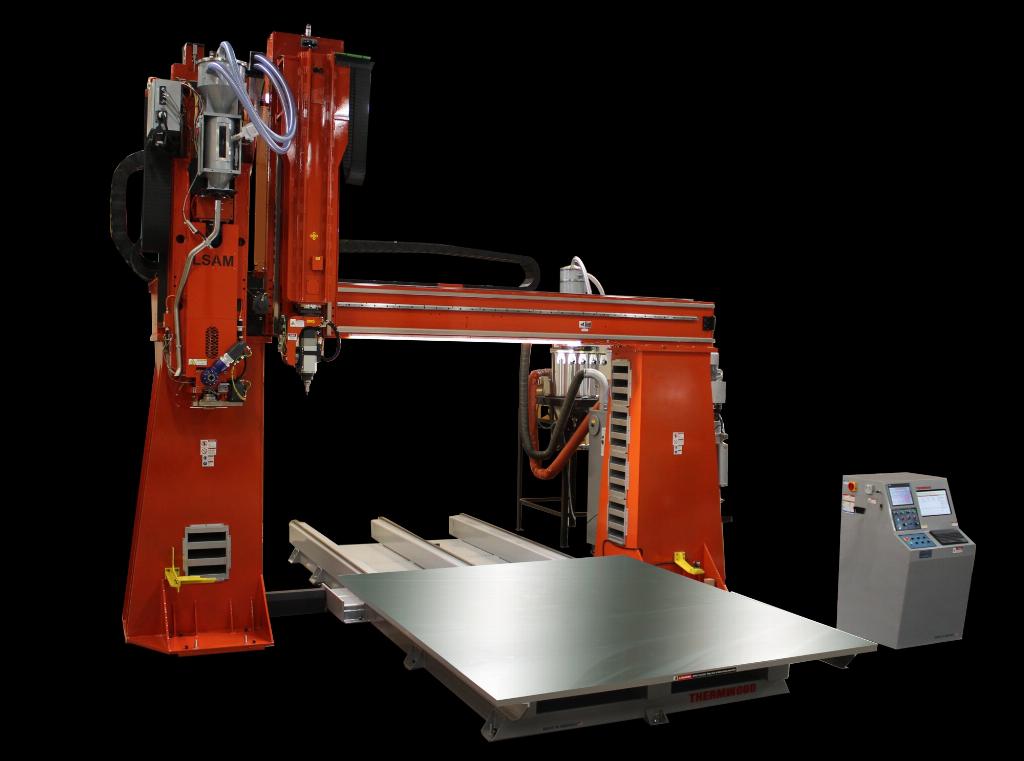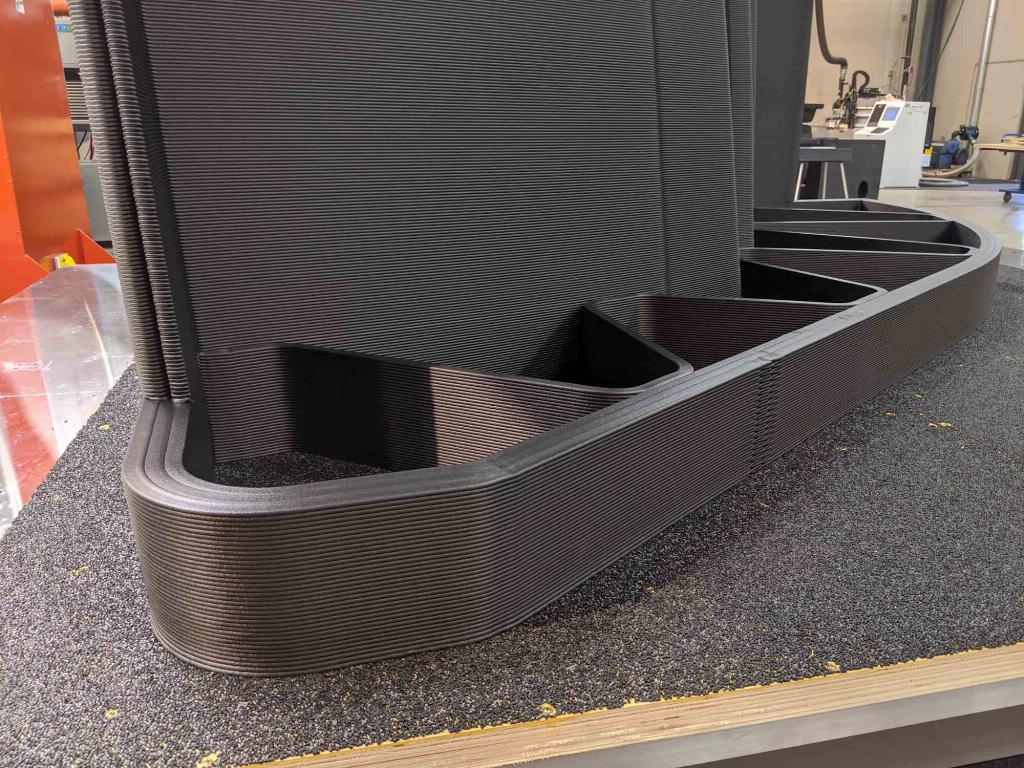Thermwood unveils new Moving Table LSAM model

At its 50th anniversary gala open house, Thermwood introduced and demonstrated an all-new LSAM additive manufacturing machine model, offering even more choices for large scale additive manufacturing applications.
Called LSAM MT, the new machine offers an all new configuration and significant advantages in certain applications. Unlike standard LSAM systems, which feature dual gantries operating over a large fixed table, the MT (which stands for ‘Moving Table’) features a single fixed-gantry mounted over a moving table. Available with either a 10 x 5ft or a 10 x 10ft table, this configuration offers several significant advantages, not the least of which is a dramatically lower price.
Despite the lower price, the LSAM MT is still a massive, robust industrial production machine capable of reliable, day in and day out production. Unlike standard LSAM systems, the MT can be configured as a ‘Print Only’ machine. The logic for this is simple.

The MT is available in two table sizes, 10ft wide by 5ft deep, and 10ft by 10ft. The 10 x 10 machine actually has a 10 x 12ft table with a 10 x 10 working area. The extra 2ft is used to mount an optional Vertical Layer Print table. The 10 x 10 MT can be equipped with a new version of Thermwood’s patented Vertical Layer Printing technology. This means that it can make parts up to 10 x 10 by 5ft high using traditional Horizontal Layer Printing or, 5 x 10 by 10ft high using Vertical Layer Printing.
Since the print technology and print heads used on the MT are the same as used on the larger machines it offers the same throughput, print quality and layer to layer fusion that has made LSAM the leader in large scale additive manufacturing. As with the larger systems, the MT can process high temperature polymers which are ideal for autoclave capable tooling or compression moulds.
With the addition of the MT, selecting the best size and configuration for an LSAM may not be quite as straightforward as it first appears. It depends on two major factors plus some additional considerations. The major factors are the material being printed and the size of the parts needed. Of these two, the material being printed is the most significant.
For purposes of machine selection, reinforced thermoplastic composite materials for room temperature or low temperature applications such as foundry patterns, boat plugs, boat and yacht moulds, building structures and the like can generally be bonded securely with a variety of industrial adhesives. For these types of parts, even for really large parts, the smaller less expensive machine may be a better choice. The part can be separated into sections which can be printed individually and bonded into the final, potentially extremely large structure.
Although it seems counter-intuitive, this approach can be faster than printing the large structure as a single piece on a larger, more expensive machine. To better understand this, Thermwood says it turns to the basics of the print process. Additive manufactured parts are printed in layers. The speed at which a layer can be printed depends primarily on how long it takes for the polymer being printed to cool enough to support the next layer. This layer cooling time depends on the polymer and is not affected by the size of the part. Each layer of a particular polymer takes the same amount of time, regardless of how big it is.

For large parts made from bondable materials, often the smaller, less expensive machine is a better choice.
Materials intended for high temperature applications, PSU, PESU, PEI, ULTEM, etc. generally are resistant enough to solvents that they can’t be effectively bonded. Even if they could, few if any, adhesives exist that can withstand the operating temperature or the thermal cycling these materials experience. For these applications, the machine needs to be large enough to print the part in one piece, even though it could be slower. This is where larger machine configurations are needed. The larger machines also offer the ability to print and trim at the same time, which may be beneficial in some circumstances.
Since the print heads are the same on all Thermwood LSAMs, the smaller MT can be used for these high temperature parts, provided they fit in the available envelope.









